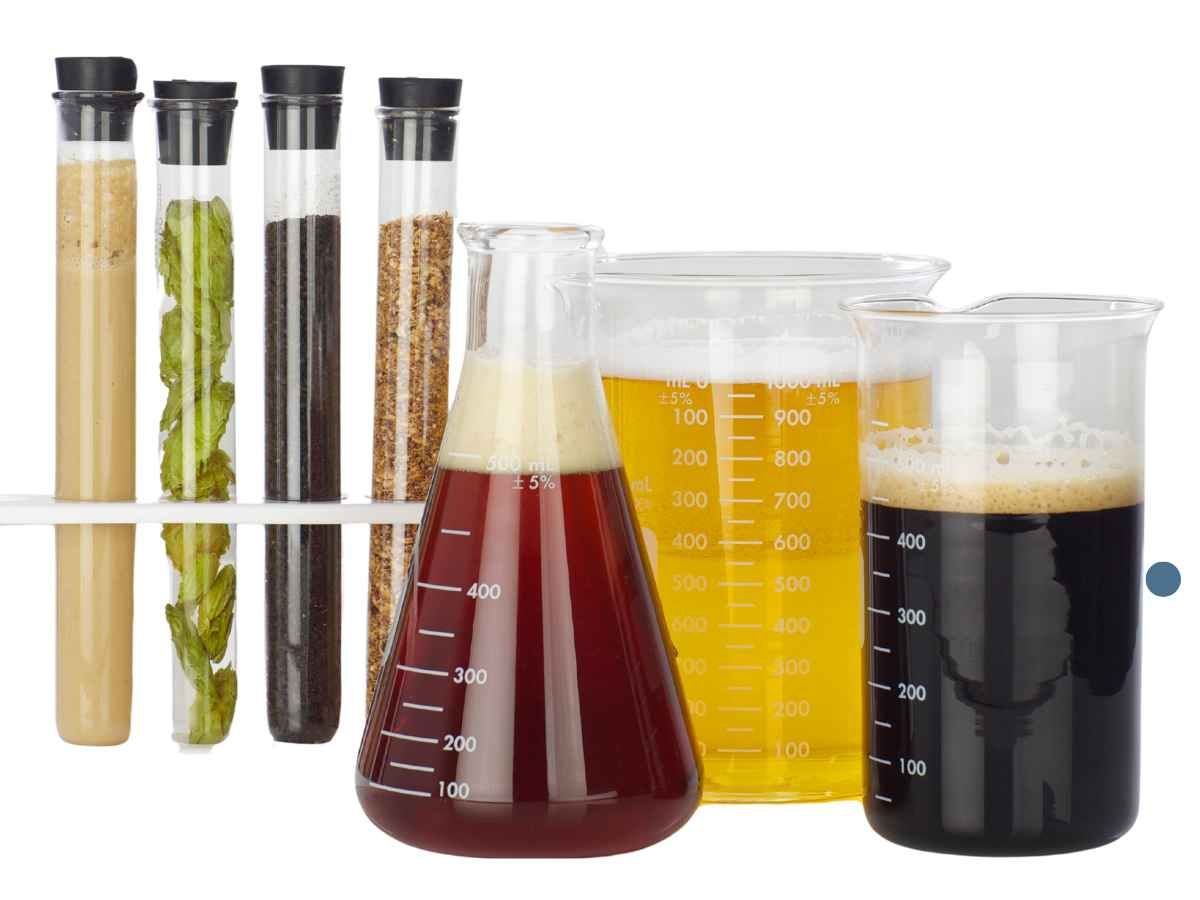The Beer Trap
Give us a Call: 724-717-4001
Brew Knowledge for the Curious Mind Uncovering the Science and History of Beer
Beer is more than just a drink; it’s a rich tapestry of history, science, and culture woven together over centuries. By understanding the intricacies of brewing and the evolution of beer styles, enthusiasts can deepen their appreciation for this beloved beverage.

The Liquid Alchemy of Beer
Beer is more than just a refreshing drink; it’s an age-old concoction that blends science, history, and culture into every frothy pint. For beer enthusiasts, history buffs, and science lovers alike, understanding the “how” and “why” behind this beloved beverage can elevate the drinking experience. This post aims to unravel these mysteries by exploring the intricate science of brewing and the fascinating history behind various beer styles.
The Origins of Beer Brewing
Beer brewing dates back thousands of years, with some of the earliest evidence found in ancient Mesopotamia. These early brewers discovered the fermentation process by chance, leading to the creation of a rudimentary form of beer. This discovery was significant, not just for the drink itself, but for the way it influenced social and cultural practices. Beer was often consumed during religious ceremonies and social gatherings, solidifying its place in ancient societies. Today, modern brewing methods may be more sophisticated, but the core principles remain rooted in these ancient practices.
Fermentation The Magical Transformation
At the heart of beer-making is fermentation, a natural process where yeast converts sugars into alcohol and carbon dioxide. Yeast, a microorganism, plays a pivotal role in this transformation, impacting both the flavor and alcohol content of the beer. Different strains of yeast are used to create distinct beer styles, each with its own unique characteristics. Understanding this process is key for any beer geek, as it highlights the delicate balance of science and art in brewing. With just the right combination of ingredients and conditions, brewers can craft a wide array of flavors, from light and crisp lagers to rich and complex stouts.
The Building Blocks of Beer Water, Malt, Hops, and Yeast
Every beer starts with four fundamental ingredients: water, malt, hops, and yeast. Each component contributes to the beer’s final taste and texture, making them integral to the brewing process. Water, which makes up about 90% of beer, affects the overall flavor profile, with certain minerals bringing out different taste notes. Malt provides the sugars necessary for fermentation and adds sweetness and body to the beer. Hops contribute bitterness and aroma, balancing the sweetness of the malt. Finally, yeast ferments the sugars into alcohol and imparts distinct flavors. By understanding these ingredients, beer enthusiasts can appreciate the nuance and complexity of their favorite brews.
A Journey Through Beer Styles
The world of beer is incredibly diverse, with countless styles that range from light to dark, bitter to sweet, and everything in between. Lagers and ales are two broad categories, each with its own substyles and characteristics. Lagers, known for their crisp and clean taste, are fermented at cooler temperatures, while ales, fermented at warmer temperatures, boast a fuller body and more robust flavors. Within these categories, you’ll find everything from the refreshing pilsners and hoppy IPAs to the malty bocks and creamy porters. Exploring these styles allows beer lovers to discover new flavors and appreciate the craftsmanship behind each pour.
The Evolution of Beer Through History
Beer has evolved significantly over the centuries, adapting to changes in technology, culture, and taste preferences. In medieval Europe, beer was not only a staple drink but also a source of nutrition, as it was often safer to consume than water. The introduction of hops in the brewing process during the Middle Ages marked a turning point, as it helped preserve beer and added a new dimension of flavor. The Industrial Revolution brought about mass production, making beer more accessible to the public. Each era has left its mark on beer, shaping it into the diverse and dynamic beverage we enjoy today.
The Science Behind Beer Flavors
The flavors in beer are a result of complex chemical reactions that occur during brewing. Maillard reactions, which happen when malted grains are heated, create a range of flavors from nutty and caramel to toasted and roasted. Hops contain essential oils that contribute floral, citrus, and herbal notes. Meanwhile, yeast produces esters and phenols, which can add fruity and spicy undertones. Understanding these processes gives beer enthusiasts insight into how brewers manipulate ingredients and conditions to achieve the desired flavor profiles. It’s a testament to the science and creativity involved in crafting each pint.
The Art of Beer Pairing
Pairing beer with food is an art that enhances the dining experience and showcases the versatility of this beloved beverage. Just as wine is paired with certain dishes, beer can complement a wide variety of flavors, from savory to sweet. The key to successful pairing is balance—matching the intensity and flavors of the beer with the food. For example, a hoppy IPA can cut through the richness of fried foods, while a malty stout pairs beautifully with chocolate desserts. By experimenting with different pairings, beer enthusiasts can discover new dimensions of taste and appreciation.
Craft Beer Revolution
In recent years, the craft beer movement has taken the world by storm, bringing innovation and creativity to the forefront of brewing. Small, independent breweries are experimenting with new ingredients and techniques, pushing the boundaries of traditional beer styles. This revolution has given rise to unique brews, such as sour ales aged in wine barrels and IPAs brewed with exotic fruit. For beer geeks, this is an exciting time to explore the vast array of options available and support local artisans. The craft beer movement is a testament to the passion and dedication of brewers who strive to create one-of-a-kind experiences for beer lovers.
Sustainability in Brewing
Sustainability is becoming an increasingly important topic in the brewing industry, as breweries seek to reduce their environmental impact. Many breweries are implementing eco-friendly practices, such as using renewable energy, recycling water, and sourcing local ingredients. These efforts not only contribute to a healthier planet but also result in fresher and more flavorful beer. For consumers who value sustainability, supporting breweries with environmentally conscious practices is a way to make a positive impact. It’s a reminder that every choice we make, even in enjoying a beer, can contribute to a more sustainable future.
Homebrewing The DIY Beer Adventure
For those fascinated by the brewing process, homebrewing offers a hands-on way to explore and experiment with beer. With a few basic pieces of equipment and ingredients, anyone can try their hand at crafting their own brews. Homebrewing allows beer enthusiasts to test new recipes, tweak flavors, and develop a deeper understanding of the science and art of brewing. It’s a rewarding hobby that combines creativity, experimentation, and a love for beer. Plus, there’s nothing quite like enjoying a cold pint of beer that you’ve crafted yourself.
The Future of Beer Innovation and Trends
The beer industry continues to evolve, with new trends and innovations shaping the future of brewing. From advancements in brewing technology to the rise of low-alcohol and non-alcoholic options, the possibilities are endless. Additionally, the integration of artificial intelligence and data analytics is streamlining the brewing process and enhancing quality control. For beer geeks and enthusiasts, staying informed about these trends offers a glimpse into what’s next in the world of beer. It’s an exciting time to be a part of this dynamic and everchanging industry.
Cheers to Beer Newfound Knowledge and Appreciation
Beer is more than just a drink; it’s a rich tapestry of history, science, and culture woven together over centuries. By understanding the intricacies of brewing and the evolution of beer styles, enthusiasts can deepen their appreciation for this beloved beverage. Whether you’re savoring a classic lager or experimenting with a unique craft brew, each sip offers a story waiting to be explored. Cheers to uncovering the mysteries behind each pint and to the continued adventures in the world of beer. For those eager to learn more, consider joining a local beer club, attending tastings, or connecting with fellow beer geeks to continue the exploration.
The Beer Trap
The Beer Trap










